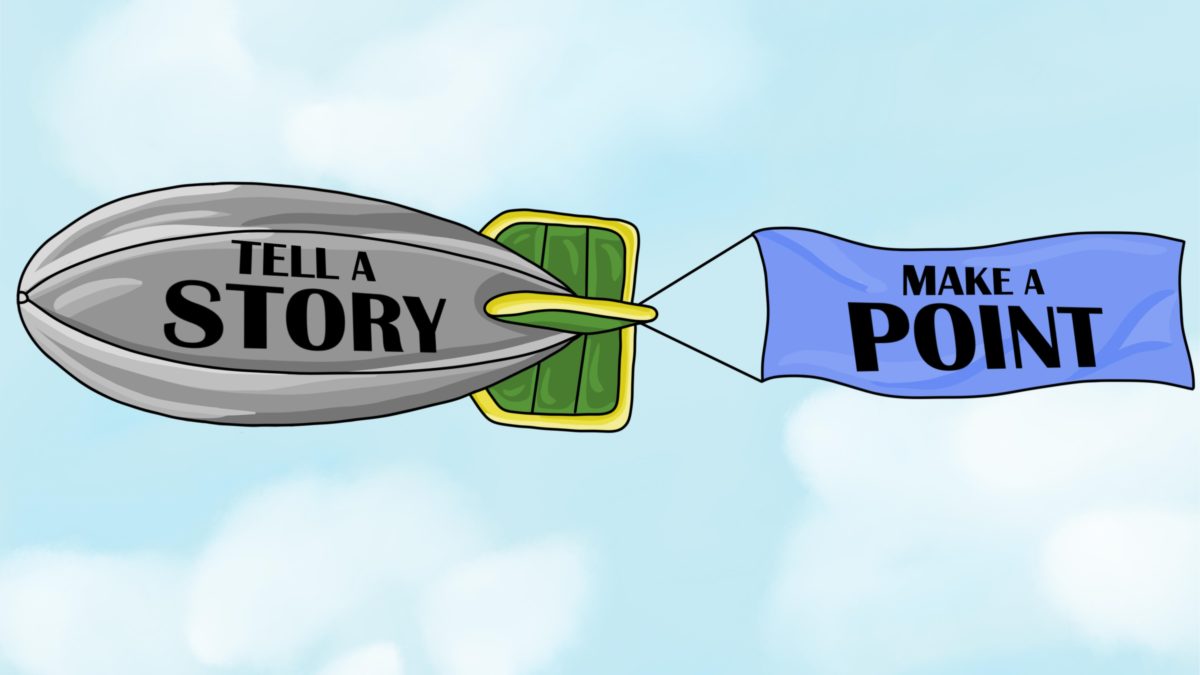- Contact Bob Goodyear at
- (404) 790-5855
- Bob@aGeekWhoSpeaks.com

Have a Planned Question for Your Silent Q&A
January 23, 2018
Deliver Value to Your Audience Using a Process
March 15, 2018Storytelling Brings Along a Point

Tell a story make a point
Storytelling in business presentations is a big topic today. It’s something that has been discussed for the last several years and continues to grow. If you Google the term “business storytelling” for example, you’ll find over 30 million references. The importance of storytelling in business has become essential.
I’ve written about storytelling several times. I’ve written about how to construct a story, where to put a story in technical presentations, and why to use stories. I want to expand on the why.
Recently I was a guest instructor at Brigham Young University – Idaho. I gave my top 5 tips for improving business presentations. One of my tips is the idea of “tell a story, make a point” for every point that you want to make in a presentation. Digging down into the topic a little more with the students, I drew a VERY rudimentary drawing of a blimp dragging a sign (I thought the blimp was appropriate given my last name). I pointed out that while it’s important to tell stories, they must have a point. First, I wrote the word “Story” on the blimp. I then wrote the word “Point” on the sign.
So, what’s the point?
My point with this illustration is this. A well-constructed story will always have a point to it. When people in your audience remember your story, they will remember the point that comes along with it. In essence, the story is the mechanism that allows your audience to remember the point. The point comes along by the story.
I’ve sat in many presentations. Most of them have been forgettable at best. The ones that I remember are the ones that use storytelling efficiently. I remember their points for years.
Technical presenters that I work with worry about telling stories. They hear that they should use stories but they’re afraid that they might lose their technical credibility. When they hear this advice, they think that they should tell a story like Humpty Dumpty. While that might wake up the audience, if there’s no point to the story that relates to the subject then indeed it is nothing more than a fairy tale. Use stories to get your audience’s attention and then make the point you want.



